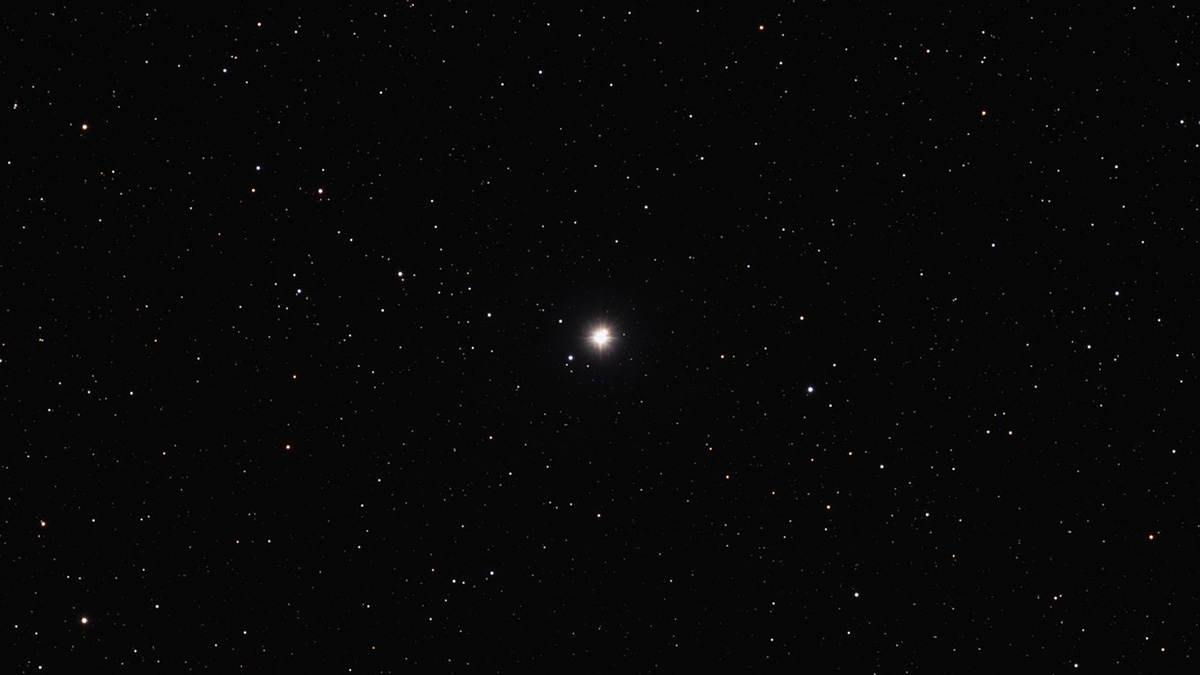Eta Cassiopeiae, also known as Achird, is a double-star system in the constellation Cassiopeia. It’s best viewed in autumn through early winter.
Have you ever wondered what our own sun would look like from far away? Well, good news, Eta Cassiopeiae A, which is the brighter star of this double star system, closely resembles our sun’s size, mass, and type. The smaller of the two, Eta Cassiopeiae B, is about half the size of our sun. What’s also notable is how close Achird is to us. Relatively, this double is very close at only 19 light-years away.
Beyond these facts, Achird makes for a pretty double star, observable even from bright suburban skies with a small telescope. The constellation Cassiopeia is rich with other deep sky targets, but Achird should not be lost in the shuffle. William Herschel discovered it in August 1779. Be sure to check it out!
My Observations
| Date | December 5, 2020 |
| Time | 6:20 p.m. |
| Location | Seattle, WA |
| Magnification | 102x |
| Scope | Meade 8″ SCT |
| Eyepiece | 20mm |
| Seeing | Average |
| Transparency | Average/Poor |

December 5, 2020 (6:20 p.m.) observation: Within the last 18 minutes, the sky has filled with clouds. The high-pressure front, which kept Seattle’s cloudy skies at bay all week, is falling apart by the minute. In a rush, I slewed the telescope to Achird to get my first glimpse of the binary. I had 10 seconds to observe Eta Cas. Through the passing haze, it looked like a brighter white star contrasted against a dimmer reddish star. Then, like a car light in the fog, it was gone. The curtain has closed on my week of clear skies.
January 9, 2022 (8:35 p.m.) observation: Tonight’s skies gave me ample time to study Achird to make up for the quick observation a year earlier. Achird is truly a beautiful star system and should be placed on any “Top 10” list for double stars. I agree with those observers who say the primary star is a fainter yellow (topaz), while the secondary smaller star is orangish-red. It’s interesting: the secondary star really plays tricks with one’s eye. At first, I thought it was more violet, but as I stared longer, it became a pale red.
January 10, 2022: Looking back on almost two years of the COVID-19 pandemic: So much has happened since I first observed Achird in December 2020. A family member died of COVID along with several other people I know. Also, I thought the pandemic would have faded into an endemic by now.
But this is not the case. It’s unfortunate that despite the progress in medicines and treatments, the emergence of new COVID variants continues to disrupt 2022. Currently, we’re facing a significant surge in COVID cases caused by the highly contagious Omicron variant. I wonder if most remaining citizens who have not tested positive for COVID, including me, will finally contract the virus by this time next year?
January 1, 2023: Christmas brings the virus home: My prediction nearly a year ago has come true. I caught the virus for the first time right after Christmas, and I’m making a full recovery right now. I’m thankful my condition turned out pretty well, minus my inability to smell, but that is starting to come back slowly.
Key Stats
| Constellation | Cassiopeia |
| Best Viewing | Autumn |
| Visual Magnitude | +3.4, +7.5 |
| Absolute Visual Magnitude | +7.7 |
| Separation | 13.5″ | 71 AU |
| Position Angle | 327 ° |
| Distance from Earth | 19 ly |
| Milky Way Location | Orion Spur |
| My Viewing Grade | A |
| Designations | SAO 21732, HIP 3821, η Cassiopeiae, Eta Cas |
Sources
Photo of Achird by David Ritter. This file is licensed under the Creative Commons Attribution-Share Alike 4.0 International license.
Sketch by Wayne McGraw
Want to learn more about Achird? Read Jim Kaler’s description and this article on the Nine Planets website
